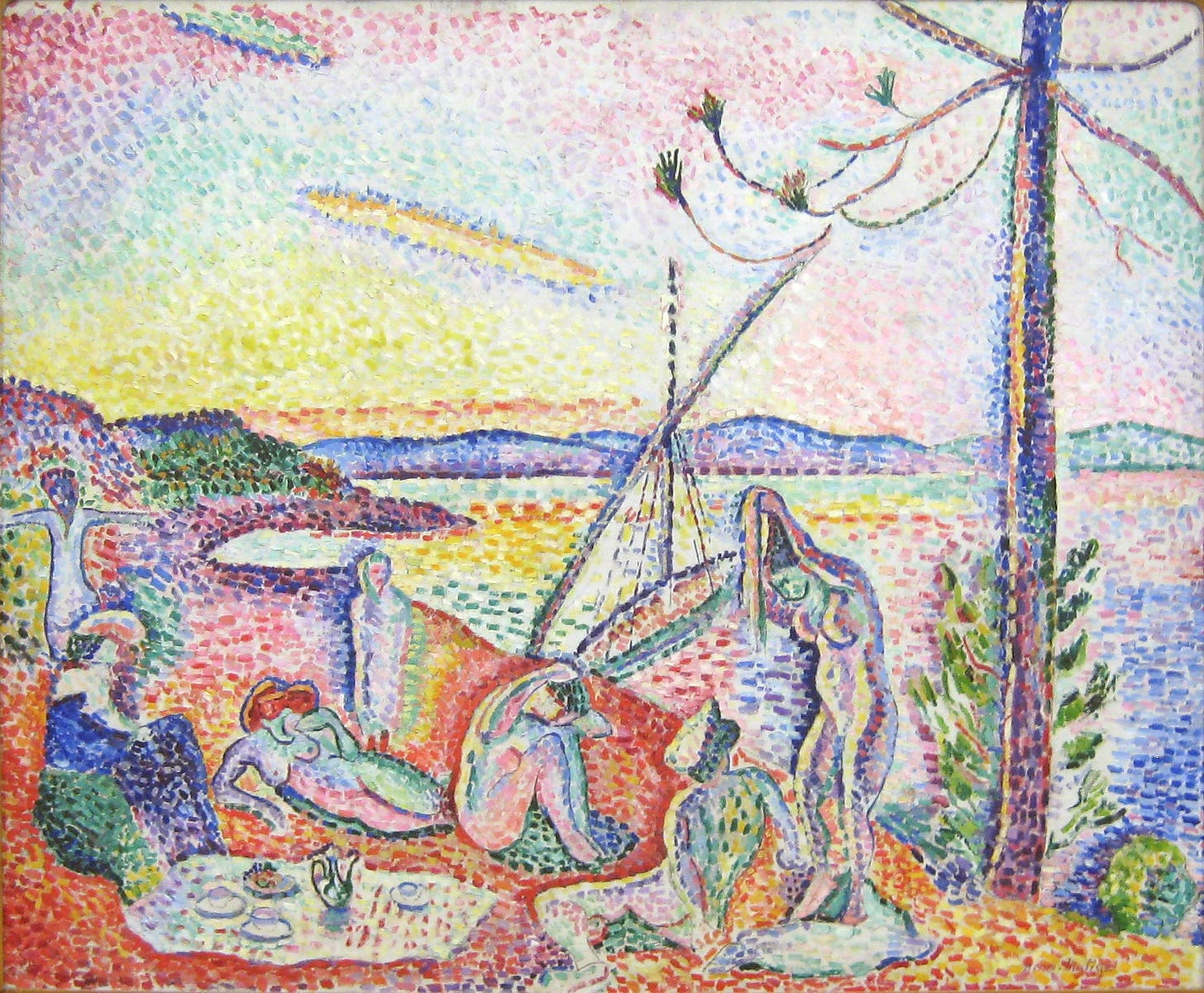Making & Meaning Conversation
The Live Conversation Takes a Recess
Making & Meaning Conversation is taking a recess until September.
Making & Meaning Conversation is a bi-monthly live, online forum for discussing contemporary art. Think of a book club, but for contemporary art. This past year we have met 17 times and covered numerous stimulating topics. In the last few sessions, we have discussed the relationship between politics and contemporary art and considered whether art can make a difference in the world. We followed up by looking at the work of several artists who make political statements with their art. The topic was spurred by the viral Dean Kissick article, “Has Politics Destroyed Contemporary Art?” which also led us to talk about how artists address their personal identities in art. As there are a number of painters in our group, we also discussed new trends in painting and looked at the work of six artists. Prior to this we discussed light as an artistic medium and looked at the work of several artists who employ, or try to represent, light in their work. Other current topics of discussion were AI and contemporary art and artists who address the climate crisis. And, finally, as we often do, we looked at the work of award nominees and winners, this time the six winners of Canada’s Sobey Art Award. Award winners are always a good barometer for spotting and discussing new trends in contemporary art. All and all, a great set of conversations!
Making & Meaning Conversation will return in the Fall. If you are interested in joining the conversation, please contact me. We meet every second and fourth Wednesday of each month at 10 am Pacific Time (1 pm ET and 6 pm GMT). The fee is very reasonable at $80.00 (Founder’s subscription) for the year. If you are too shy to join us live on-line you might consider a basic subscription ($60.00 per year) which will give you access to the topic material and the opportunity to share your thoughts on Making & Meaning Chat.
To close, here is a Conversation post from January this year. The topic was new trends in paintings and we looked at the work of Firelei Báez, Flora Yukhnovich, and Jadé Fadojutimi.
Enjoy! I will be back in two weeks with my regular postings and more on the making and meaning of contemporary art.
Painters Painting
Contemporary Art Without an Agenda
A growing number of young painters are reaching the top ranks of the contemporary art world. Some of them, like Firelei Báez (b. 1981), Flora Yukhnovich (b. 1990), and Jadé Fadojutimi (1993), are also eschewing overt thematic content and political statements. Instead, they paint with a focus on their medium and offer large scale decorative and figurative works that allow the viewer to draw their own interpretation. Is the recognition of these young artists signaling a new trend in contemporary art?
Firelei Báez is the eldest of these three and also the highest ranked on ArtFacts.net where she is one of the top 1,000 artists in the world. A mid-career survey of her work, circulated by the Institute of Contemporary Art, Boston, is showing at the Vancouver Art Gallery. The exhibition text calls Báez, “one of the most exciting painters of her generation” and “one of the most important artists of the early 21st century.”
Flora Yukhnovich is a British painter who now ranks in the top 10,000 on ArtFacts.net. She takes her inspirational cue from French rococo painting. This past summer she was profiled in Vogue where she was described as an “Art-World Phenomenon.” Her work is currently on exhibit at the Ashmolean Museum in Oxford along with the work of another young painter, Daniel Crews-Chubb.
Another British painter is Jadé Fadojutimi. Her work has been exhibited internationally in Japan, United States, and at the Venice Biennale (2022). In November, she was featured in a profile article in The New Yorker where she was referred to as one of the “new master” painters of the 21st century. Like Yukhnovich she is ranked in the top 10,000 on ArtFacts.net.
There are several directions our conversation can follow on this topic. First, we can consider the three artists’ motivations and inspirations based on the articles and the video interviews. Another discussion can be about their painting method (as many of you are painters). In both cases, we might consider how the artists’ practice differs, in subject and method, from many of their contemporaries. We might also consider what their work offers the viewer if it is not intent on teaching a lesson or challenging social or political values. And, finally, we might ask, does this work signal a new trend in contemporary art?



OK, I would like to comment on the three artist from Contemporary Art Without an Agenda:
Firelei Báez, is the most accomplished of the three, the most skillful, perhaps. I feel she struggles to apply those skills in ways she finds culturally acceptable. It’s an interesting dilemma.
Flora Yukhnovich, Giovanni Battista Tiepolo came to mind immediately. If that is her intention, then she has succeeded.
Jadé Fadojutimi, brings a great deal of energy to her work. Slade and the RCA, but there is still much to improve upon, I’m afraid.